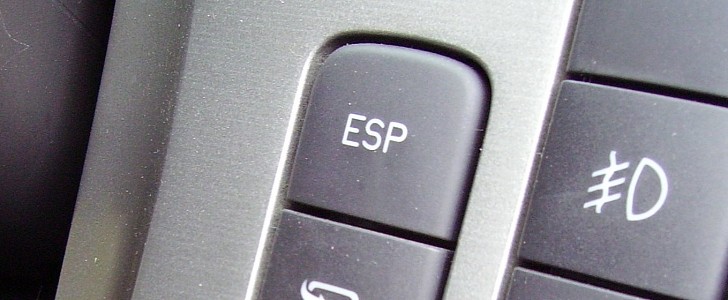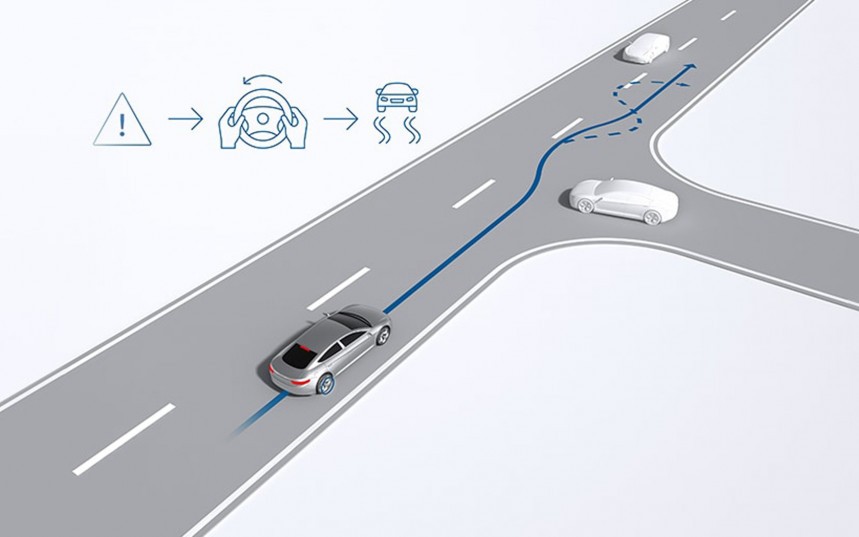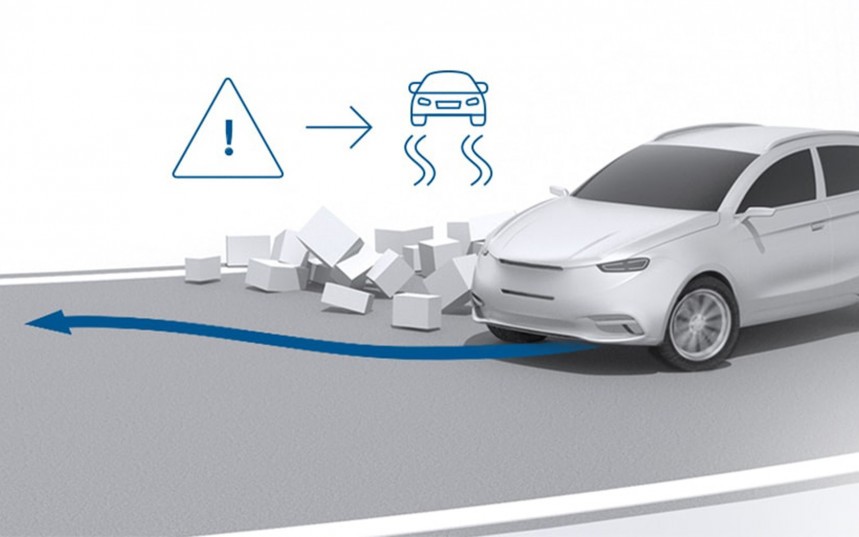One of the most critical technologies on modern vehicles, Electronic Stability Control (ESC) is responsible for preventing countless accidents for decades. In this article, we’re going to explore its origins and understand how it works.
Also known as electronic stability program (ESP) or dynamic stability control (DSC), this technology traces its roots to the mid-eighties when carmakers began developing advanced traction control systems.
In 1990, Mitsubishi introduced the Diamante for the Japanese market, a car that featured a new electronically controlled active trace and traction control system, a precursor to the modern ESC.
The first model to use this technology was the 1995 Mercedes-Benz S 600 Coupe, which was equipped with a system co-developed with Bosch called Elektronisches Stabilitätsprogramm (Electronic Stability Program).
Over the years, this technology evolved and became widely used by the majority of carmakers and even became mandatory in multiple countries.
ESC can be defined as an active safety feature designed to improve a car’s stability by detecting and reducing skidding (loss of traction).
It uses a suite of sensors that monitor pitch, roll, and yaw and works in conjunction with the vehicle’s traction control (TCS) and antilock braking (ABS) systems. When these sensors detect loss of steering control, the ESC module automatically applies the brakes to each wheel to help keep the vehicle on its designated path. In modern vehicles, it also limits engine power.
In other words, you’re driving on a wet portion of a highway that bends to the right, but the car suddenly begins to understeer. The ESC will prevent it from going straight into the side rails by quickly adding individual brake pressure to the wheels that lose traction, thus keeping it moving in the direction you’re steering.
Although you might have heard otherwise, these are two different systems, yet the ESC cannot function without TCS. As mentioned before, along with the ABS, these systems work together. The simplest way I can explain the difference is that the TCS only limits wheel slippage, whereas ESC also prevents lateral skidding, thus maintaining the car’s trajectory.
Far from public roads, disabling the ESC will allow you to play around with the car, which is more susceptible to oversteer, especially if it’s rear-wheel-driven. However, we don’t recommend doing so unless you know what you are doing and you took all the necessary safety precautions.
Nowadays, with the huge number of available safety features and advanced driver assist systems, it’s easy to forget about the ESC, but it continues to be one of the most important safety systems on our vehicles.
According to statistics, the system is responsible for reducing the occurrence of single-vehicle and roll-over crashes as vehicles with this technology are involved in 32% fewer single-vehicle collisions, and 58% fewer roll-over crashes.
In 1990, Mitsubishi introduced the Diamante for the Japanese market, a car that featured a new electronically controlled active trace and traction control system, a precursor to the modern ESC.
The first model to use this technology was the 1995 Mercedes-Benz S 600 Coupe, which was equipped with a system co-developed with Bosch called Elektronisches Stabilitätsprogramm (Electronic Stability Program).
Over the years, this technology evolved and became widely used by the majority of carmakers and even became mandatory in multiple countries.
So, what is it, and how does it work?
It uses a suite of sensors that monitor pitch, roll, and yaw and works in conjunction with the vehicle’s traction control (TCS) and antilock braking (ABS) systems. When these sensors detect loss of steering control, the ESC module automatically applies the brakes to each wheel to help keep the vehicle on its designated path. In modern vehicles, it also limits engine power.
In other words, you’re driving on a wet portion of a highway that bends to the right, but the car suddenly begins to understeer. The ESC will prevent it from going straight into the side rails by quickly adding individual brake pressure to the wheels that lose traction, thus keeping it moving in the direction you’re steering.
What is the difference between TCS and ESC?
When should you turn off ESC?
All cars that use this technology are equipped with a button (physical or not) that allows drivers to disable it. You should only disable if your vehicle is stuck in snow or mud to allow the wheels to spin a bit more and dig into the surface to regain traction.Far from public roads, disabling the ESC will allow you to play around with the car, which is more susceptible to oversteer, especially if it’s rear-wheel-driven. However, we don’t recommend doing so unless you know what you are doing and you took all the necessary safety precautions.
Nowadays, with the huge number of available safety features and advanced driver assist systems, it’s easy to forget about the ESC, but it continues to be one of the most important safety systems on our vehicles.
According to statistics, the system is responsible for reducing the occurrence of single-vehicle and roll-over crashes as vehicles with this technology are involved in 32% fewer single-vehicle collisions, and 58% fewer roll-over crashes.








